One of the most defining features of a steam locomotive is its smokebox. It’s not only pretty to look at; it’s also an integral part of these stunning motors’ power, performance, and efficiency. The smokestack is the part of the steam locomotives painting responsible for collecting the byproducts of fuel combustion (steam and condensate).
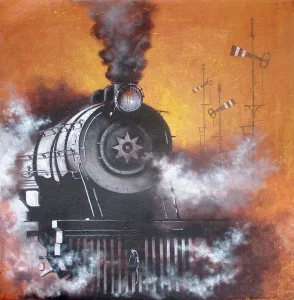
Why do steam locomotives have Steam locomotives painting black paint?
Therefore, it is crucial to maintain the smokebox in good condition to ensure the engine runs smoothly. However, the smokebox’s aesthetic value is not to be underestimated, which is why it has been painted with a broad variety of materials throughout the years. Engineers have tried many different materials to prevent corrosion in the smokebox and improve the locomotive’s aesthetics since the steam locomotive’s inception. The smoke boxes of steam locomotives have been painted in Steam locomotives painting with everything from traditional enamel to cutting-edge synthetic coatings, and we’ll cover them all here.
Black was traditionally selected as the most long-lasting hue on steam locomotives. The lower ongoing costs were partially attributable to the fact that black paint lasted longer and needed less upkeep than other hues. When coal was still the primary fuel for trains, the color black had another function: it covered off the dust and soot that accumulated on the locomotive’s exterior. This was a major factor to think about back then. Furthermore, the black paint contrasted with the metal fittings and piping of the train, making them stand out against the backdrop of the dark paint and making any imperfections more noticeable.

To sum up, many railways choose to utilize black steam locomotives above any other kind of locomotive because of their practicality, economy, and aesthetic appeal. Choosing the steam locomotive paintings is essential here.
After the engine of a locomotive has cooled, the exhaust is called exhaust. Most of the exhaust is burned, transforming it into heat, carbon dioxide, water, and trace elements. There are several names for this kind of exhaust: mild exhaust, or exhaust that is almost undetectable. The efficiency with which it runs and the amount of fuel it consumes may be used as indicators of a locomotive’s health. If you want to know how efficient a steam locomotive is, just look at the color of its exhaust. If a diesel engine is emitting black smoke, it is probable that it is not burning its fuel completely and is releasing unburned fuel particles into the atmosphere. Not only is this wasteful, but it might also contribute to dangerously high pollution levels.
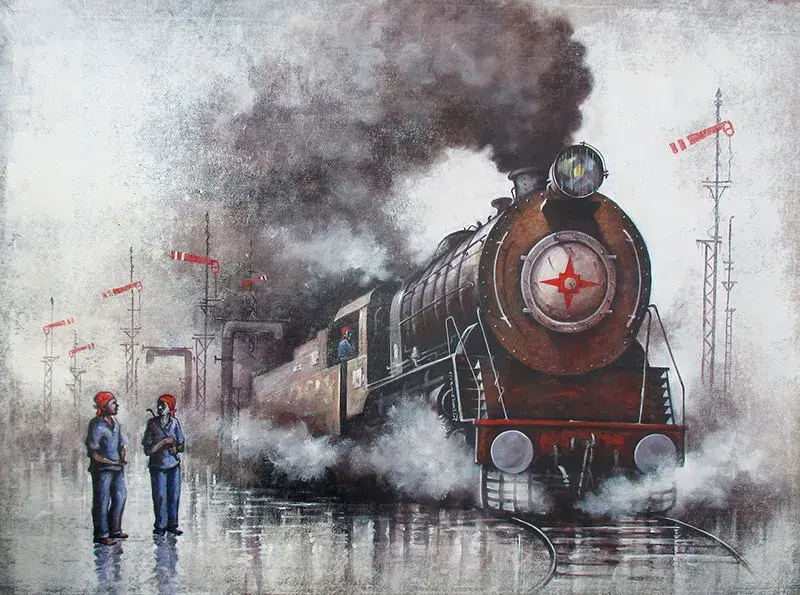
When a locomotive’s exhaust is little or hardly perceptible, it signifies that the fuel is being burned efficiently, transforming into heat, carbon dioxide, water, and trace elements which is one of the reason for Steam locomotives painting. In my opinion, the best-case scenario would be if the locomotive could run on less fuel and produce fewer pollutants, which would benefit both the environment and the locomotive. In conclusion, checking the steam locomotive’s exhaust may help determine how efficiently the locomotive consumes fuel, which in turn helps reduce emissions and fuel waste. If you want your steam locomotive to run at peak efficiency, you need to keep a constant watch on the color of its exhaust in Steam locomotives painting.
When riding a train, what is a “smoke box” precisely for?
In railroading, the term “smoke box” refers to the front compartment of a locomotive that stores and vents the vehicle’s exhaust result of Steam locomotives painting. The name of this compartment comes from its position near the locomotive’s nose. It is affixed to the locomotive’s smokestack and allows the exhaust to be drawn away from the engine and discharged into the atmosphere.
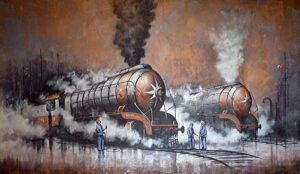
The smoke box is often made of metal and has firebricks lining the interior to prevent melting or warping from the intense heat of the exhaust. A blast pipe is also put in the smoke box to create a draught that forces the exhaust to rise the smoke stack and exit the smoke box.
A steam locomotive’s chimney is a crucial part of the exhaust system that releases hot, smoke-filled exhaust gases into the atmosphere. Engine operators in the United States often use mineral oil, known as paraffin oil elsewhere in the world, to create the characteristic impression of billowing smoke. Its common usage as a laxative means you may be able to pick some up at your local grocery store or pharmacy. When burned, it generates thick, white smoke that drifts out of the locomotive’s chimney, making passengers and bystanders nostalgic. Locomotives can’t run without smoke fluid, which acts as a visual indication to the driver and provides crucial feedback to keep the engine running smoothly and color in Steam locomotives painting.
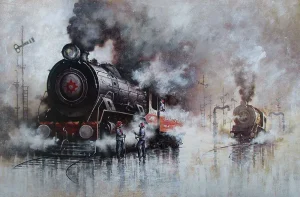
Conclusion
Steam locomotives hold significant importance in the realm of art in Steam locomotives painting. The current discourse pertains to a collective experience of reminiscing about past events or cultural phenomena. The paintings of trains by Kishore Pratim Biswas have evoked a sense of nostalgia among global audiences.
Author Bio:
The writer is a painting critic offering reviews on the Steam locomotives painting. His writings have been appreciated in every respect.
For more updates – Today News


















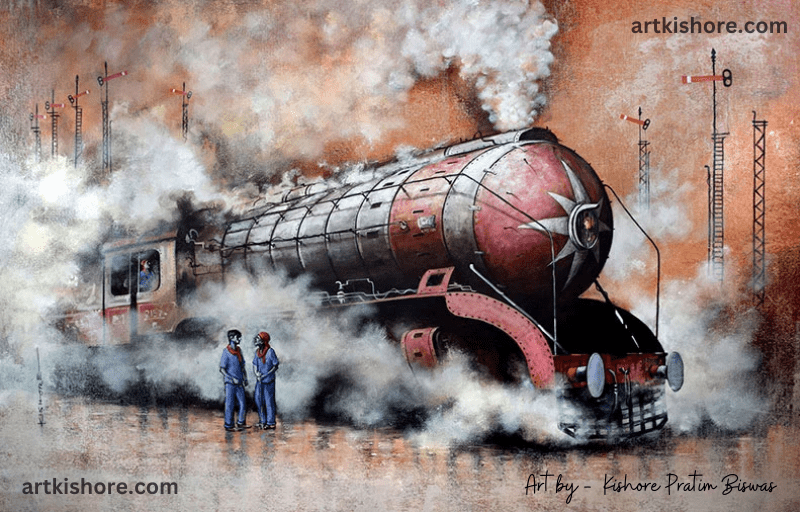















+ There are no comments
Add yours